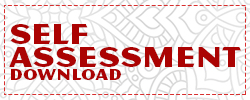ANALYSIS OF THE IMPLICATIONS OF COMMUNICATION BEHAVIOR IN IDOL AND FAN RELATIONSHIPS THROUGH THE BTS CHANNEL COMMUNITY ON WEVERSE
DOI:
https://doi.org/10.22487/ejk.v11i1.1160Keywords:
K-Pop, Weverse, Virtual Community, Fan-Idol InteractionAbstract
The massive use of mass media in the digital era makes us easily touched and influenced by the information held by mass media. Social media is one of the mass media that brings this influence to every user. Including the Weverse social media which is used by fans to interact with fellow communities and also their idols. So, to see the influence and implications of communication within the community, this research aims to analyze the influence of communication behavior between idols and fans in the BTS Channel community via Weverse social media. This research uses a descriptive-qualitative method using the basis of information processing theory where this research helps understand how humans process information and how this process influences human behavior. Data collection was carried out by observing and interviewing seven sources and their communication activities on Weverse social media. The results of this research reveal that the influence of communication between idols and fans can be seen through three aspects, namely cognitive, affective, and conative.
Downloads
References
Abd-Rahim, A. (2019). Online Fandom: Social Identity and Social Hierarchy of Hallyu Fans. Journal for Undergraduate Ethnography, 9(1), 65–81. https://doi.org/10.15273/jue.v9i1.8885
Abidin, J., Suryani, Y., Sultan, U., Hasanuddin Banten, M., Agama, K., & Tangerang, K. (2020). Kajian Perilaku Kelompok dalam Organisasi. In Jurnal Literasi Pendidikan Nusantara (Vol. 1, Issue 2). http://jurnal.uinbanten.ac.id/index.php/jlpn
Agosto, D. E., & Abbas, J. (2011). Teens, Libraries, and Social Networking: What Librarians Need to Know. ABC-CLIO.
Amroshy, A. U. Al. (2014). Hegemoni Budaya Pop Korea Pada Komunitas Korea Lovers Surabaya (KLOSS). Paradigma.
Bok-rae, K. (2015). Past , Present and Future of Hallyu (Korean Wave). American International Journal of Contemporary Research.
Click, M. A., Lee, H., & Holladay, H. W. (2017). ‘You’re born to be brave’: Lady Gaga’s use of social media to inspire fans’ political awareness. International Journal of Cultural Studies, 20(6), 603–619. https://doi.org/10.1177/1367877915595893
Cohen, J. (2014). Mediated Relationships and Social Life. In Media and Social Life (pp. 142–156). Routledge. https://doi.org/10.4324/9781315794174-10
Damiati, Luh, M., & Made, S. (2017). Perilaku Konsumen (1st ed.). Rajawali Press.
Durkheim, E. (1893). The Division of Labor in Society. DIGIREADS.COM.
Frismadewi, R. , & Darminto, E. (2022). Hubungan antara status identitas dan kontrol diri dengan perilaku imitasi budaya k-pop pada remaja pelajar. Teraputik: Jurnal Bimbingan Dan Konseling,.
Gray, J., Sandvoss, C., & Harrington, C. L. (2007). Fandom: Identities and Communities in a Mediated World (1st ed.). New York University Press.
Hanan, M. S. , K. (2021). Interaksi Parasosial Antara Idola Dengan Penggemarnya. Universitas Muhammadiyah Surakarta.
Hartmann, T. (2008). Mediated Interpersonal Communication. Lawrence Erlbaum Associates.
Hidayati, B. M. R. (2019). Peran Bimbingan dan Konseling di Madrasah. Journal An-Nafs: Kajian Penelitian Psikologi, 4(1), 15–33. https://doi.org/10.33367/psi.v4i1.653
Hofstede, G. (1991). Cultures and organizations : software of the mind. McGraw-Hill.
Jang, W., & Song, J. E. (2017). The Influences of K-pop Fandom on Increasing Cultural Contact. Community Sociology.
Juwita, S. (2018). Tingkat fanatisme penggemar k-pop dan kemampuan mengelola emosi pada komunitas EXO-L di kota yogyakarta. . Jurnal Riset Mahasiswa Bimbingan Dan Konseling.
Kim, M., & Kim, J. (2020). How does a celebrity make fans happy? Interaction between celebrities and fans in the social media context. Computers in Human Behavior, 111, 106419. https://doi.org/10.1016/j.chb.2020.106419
Kristya, G. M., & Sarwono, R. B. (2023). Triwikrama: Jurnal Multidisiplin Ilmu Sosial Hiperrealitas Dalam Interaksi Parasosial Pada Mahasiswa Penggemar K-Pop Di Yogyakarta (Studi Fenomenologi). 3(2), 2024–2025.
Kurnia, N. (2005). Perkembangan Teknologi Komunikasi dan Media Baru: Implikasi terhadap Teori Komunikasi. Mediator.
Lamerichs, N. (2018). Productive Fandom. Amsterdam University Press. https://doi.org/10.2307/j.ctv65svxz
Lee, J., & Hong, I. B. (2016). Predicting positive user responses to social media advertising: The roles of emotional appeal, informativeness, and creativity. International Journal of Information Management, 36(3), 360–373. https://doi.org/10.1016/j.ijinfomgt.2016.01.001
Machin, D. (2002). Ethnographic Research for Media Studies. Oxford University Press Inc.
Mangkunegara, A. P. (2009). Perilaku Konsumen. Refika Aditama.
Mangunsong, G., Pohan, S., Perwirawati, E., & Perwirawati, ) Elok. (n.d.). NETNOGRAFI KOMUNIKASI PADA KOMUNITAS FANDOM ARMY INDONESIA.
Manovich, L. (2001). The Language of New Media. The MIT Press.
Murdiyanto, E. (2020). Metode Penelitian Kualitatif. UPN “Veteran” Yogyakarta Press.
Nasrullah, R. (2020). Etnografi Virtual : Riset Komunikasi, Budaya, dan Sosioteknologi di Internet (4th ed.). Simbiosa Rekatama Media.
Oktarina, Y., & Abdullah, Y. (2017). Komunikasi dalam Perspektif Teori dan Praktik. Deepublish.
Pang, A., Shin, W., Lew, Z., & Walther, J. B. (2018). Building relationships through dialogic communication: organizations, stakeholders, and computer-mediated communication. Journal of Marketing Communications, 24(1), 68–82. https://doi.org/10.1080/13527266.2016.1269019
Perbawani, P. S., & Nuralin, A. J. (2021). Hubungan Parasosial dan Perilaku Loyalitas Fans dalam Fandom KPop di Indonesia. LONTAR: Jurnal Ilmu Komunikasi, 9(1), 42–54. https://doi.org/10.30656/lontar.v9i1.3056
Putri Wardani, E., Sari Kusuma, R., Muhammadiyah Surakarta, U., Ahmad Yani, J., & Tengah, J. (2021a). INTERAKSI PARASOSIAL PENGGEMAR K-POP DI MEDIA SOSIAL (Studi Kualitatif pada Fandom Army di Twitter) Parasocial Interaction of K-Pop Fans in Social Media (A Qualitative Study towards Army Fandom on Twitter). Jurnal Magister Ilmu Komunikasi, 7(2), 243–260. http://journal.ubm.ac.id/
Putri Wardani, E., Sari Kusuma, R., Muhammadiyah Surakarta, U., Ahmad Yani, J., & Tengah, J. (2021b). Interaksi Parasosial Penggemar K-Pop Di Media Sosial (Studi Kualitatif pada Fandom Army di Twitter) Parasocial Interaction of K-Pop Fans in Social Media (A Qualitative Study towards Army Fandom on Twitter). Jurnal Magister Ilmu Komunikasi, 7(2), 243–260. http://journal.ubm.ac.id/
Rizqiyah, N., & Marzuki, M. E. (n.d.). Interaksi Simbolik Antara Penggemar Dengan Idol K-Pop Bangtan Boys Studi Fenomenologi Pada Platfrom Weverse. JSL Jurnal Socia Logica, 3(2), 2023.
Sagita, A., & Kadewandana, D. (2017a). Hubungan Parasosial di Media Sosial (Studi pada Fandom Army di Twitter). Journal of Strategic Communication.
Sagita, A., & Kadewandana, D. (2017b). Hubungan Parasosial di Media Sosial (Studi pada Fandom Army di Twitter). Journal of Strategic Communication.
Schramm, H., & Hartmann, T. (2008). The PSI-Process Scales. A new measure to assess the intensity and breadth of parasocial processes. COMM, 33(4), 385–401. https://doi.org/10.1515/COMM.2008.025
Setyani, Y. (2017). The Meaning of Imitation amongst K-Pop Cover Dancers in Surabaya. Allusion.
Sokolova, K., & Kefi, H. (2020). Instagram and YouTube bloggers promote it, why should I buy? How credibility and parasocial interaction influence purchase intentions. Journal of Retailing and Consumer Services, 53, 101742. https://doi.org/10.1016/j.jretconser.2019.01.011
Supriyatin, T., Syafa’atun, S., Asih, D. A. S., & Arfa, A. N. (2023). Dampak Budaya K-Pop Terhadap Tingkat Motivasi Belajar Mahasiswa. Research and Development Journal of Education, 9(2), 658. https://doi.org/10.30998/rdje.v9i2.17145
Tidwell, L. C., & Walther, J. B. (2002). Computer-Mediated Communication Effects on Disclosure, Impressions, and Interpersonal Evaluations: Getting to Know One Another a Bit at a Time. Human Communication Research, 28(3), 317–348. https://doi.org/10.1111/j.1468-2958.2002.tb00811.x
Vira Eka Reynata, A., Aditya Fantino, R., & Teguh santoso, M. (2022). Perubahan Gaya Hidup Hedonisme pada Kalangan Mahasiswa Rantau Di Kota Surabaya. In Universitas Negeri Surabaya.
Vivian, J. (2008). Teori Komunikasi Massa (8th ed.). Prenada Media Group.
Walgito, B. (2010). Pengantar Psikologi Umum. Andi.
Weaver, R. L. (1993). Understanding Interpersonal Communication (6th ed.). Harper Collins Publishers.
Wulandari, K., & Universitas Mulawarman, F. (2023). Parasocial Interactions And Loyalty Levels Of Teenagers Ending Korean Pop (K-Pop) Fans In Samarinda Interaksi Parasosial Dan Tingkat Loyalitas Konsumen Remaja Akhir Penggemar Korean Pop (K-Pop) Di Samarinda. In Management Studies and Entrepreneurship Journal (Vol. 4, Issue 2). http://journal.yrpipku.com/index.php/msej
Wylie, H. (2019). BTS and UNICEF Call On Young People to Spread Kindness on International Day of Friendship: Global Pop Group Releases Video to Call for An End to Violence in and Around Schools. Unicef.Org.
Yoon, K. (2019). Transnational fandom in the making: K-pop fans in Vancouver. International Communication
Gazette, 81(2), 176–192. https://doi.org/10.1177/1748048518802964
Yuliawan, B. A. P., & Subakti, G. E. (2022). Pengaruh Fenomena Korean Wave(K-Pop Dan K-Drama) Terhadap Perilaku Konsumtif Penggemarnyaperspektif Islam. Jurnal Penelitian Keislaman.







